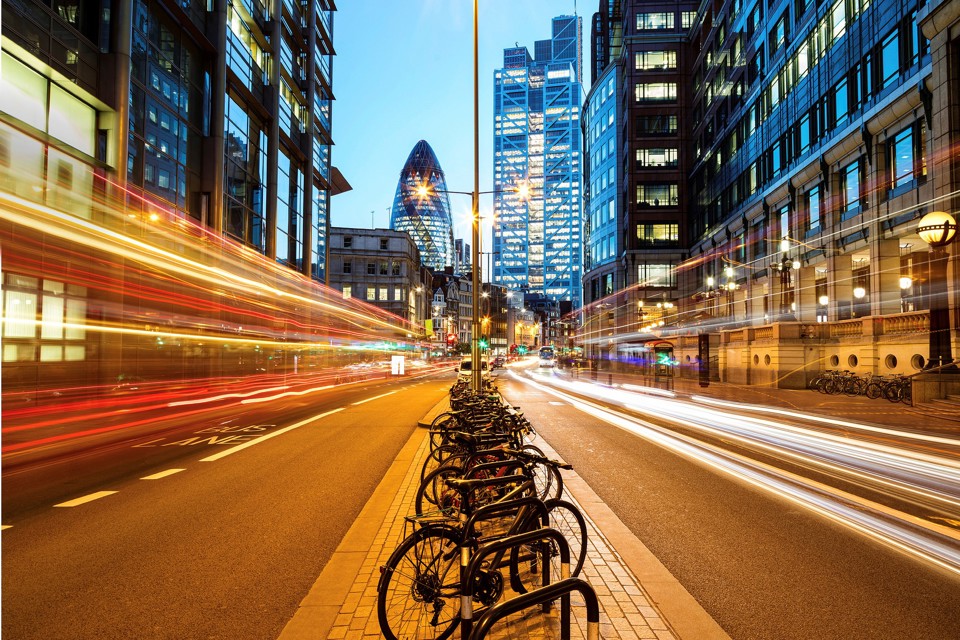Understanding customers – be they users of the road network, public transport, car clubs or other modes of transport – must be at the heart of any short- or long-term planning for private and public sector organisations.
Technology can act as an enabler for change (for example, an app which allows consumers to choose between different modes of transport), but it will ultimately be the customers who will determine how quickly things evolve in the fleet and transport sectors.
Khaled Shahbo, UK and Ireland managing director at Enterprise Rent-A-Car, likens it to the music industry over the past 30 years which evolved from customers listening to music on vinyl to cassette tapes, CDs, MP3 players and, more recently, streaming and subscription models.
“Technology enabled the change, but consumers determined the adoption and the direction of that change,” he says. “It was driven by people making choices that suited their needs.”
Similarly, people choose the mode of transport that best suits them. Shahbo says that “at no point during music’s evolution were consumers forced down one particular path; all formats of music were allowed to co-exist and still do”.
Therefore he believes that in transport all modes should be “accessible, affordable and integrated to allow users the power of choice”.
Martin Tugwell, director of England’s Economic Heartland, a sub-national transport body which aims to realise the economic potential of the Oxford/Milton Keynes/Cambridge corridor and surrounding areas, believes that policymakers can sometimes be guilty of forgetting that it is the user that drives change.
“We’ve got to get better at being able to understand the user’s needs,” he says. “We’re investing in a new series of tools to help us understand how behaviours change with age so if I’m looking at 30 years for transport strategy, people who are 20 will be 50 and they will have gone through various stages of their life. Their needs, their travel requirements, will have changed many times.”
Highways England, which is responsible for managing the nation’s motorways and A roads, has established a set of key performance indicators (KPIs), based on the quality of service it wants to give customers, looking at day-to-day activities such as average delay and time taken to clear incidents on motorways as well as longer term goals such as a 40% reduction in the number of people who are killed or seriously injured on the network by the end of 2020.
It plans its activity in five-year cycles and is currently in the 2015-2020 cycle. A key change has been focusing more on customers, communities and environment, which has included creating or improving 79 cycle paths and footpaths since 2015.
“It’s really important that we’re delivering more than basic tarmac, we’re delivering things that improve the lives of people around the network,” says Elliot Shaw, executive director of Highways England.
“We’re ramping our focus on those designated funds over the next 18 months or so.”
Highways England has also carried out scenario work as it recognises that “there are different futures potentially out there”, Shaw says.
Its Connecting the Country document, which was published in December 2017, attempts to predict what the network may look like in 2050.
“For us, as a road operator, there is a clear future of everyone whizzing around in electrified autonomous pods,” Shaw says. “But the real question and challenge for us is what do we do in the next three-to-five years that will move things on in a positive, incremental way that enables us to get to that transformational state.”
As a result, Highways England will be looking at three areas:
* Digital customers: providing better information to customers via their smartphones in the short-term or directly to vehicles. Technology trials are taking place along the ‘connected corridor’ on the A2/M2 in Kent. “We’ve seen that if only 7% of the vehicles on that corridor are connected and you communicate directly with them and influence their behaviour, that has real positive impacts in terms of congestion and flow on that stretch,” Shaw says.
* Digital design: such as using technology to design road schemes (what Highways England calls its ‘rapid engineering model’) and autonomous construction.
* Digital operations: joining up traffic management systems to manage the network in a seamless way.
Tugwell believes digital infrastructure, not just transport infrastructure, is “fundamental” to England’s Economic Heartland’s vision of “connecting people and places with opportunities and services”.
“It’s about understanding how we access and use connectivity to run our daily lives,” he says.
Planning in the short-term to deliver in the long-term requires a national policy statement for strategic infrastructure, specifically for the Heartland, in his view, as it would provide certainty, investment and help accelerate delivery.
He says it can take too long to deliver key pieces of infrastructure, citing the East-West Rail project, which is likely to be finished by 2022/2023 – 25 years after a consortium was formed.
“We need to get better at delivery,” he says.
But nothing can be achieved without proper collaboration.
“We have to collaborate, this is about public and private working in partnership,” he says.
Shahbo adds: “Innovation will not come from a single source. We need to come together to form a consensus on what is important to individual consumers, commuters, businesses, society and governments to then agree what we can do next.”
Three-point formula to change the face of transportation
Khaled Shahbo outlines what policymakers need to do to bring about change in transport.
1 Reduce the cost of ultra-low emission vehicles and invest in infrastructure to support electrification.
2 For the Department for Business, Energy and Industrial Strategy, the Department for Transport, the Department for Environment, Food and Rural Affairs (Defra) and local government to align with transportation providers, private and public sector and other commercial partners to discuss the real world implementations of clean air zones.
3 To introduce incentives and guidance to help transition change and change consumer and commuter behaviours because punitive measures alone, where there is no viable alternative, simply aren’t as successful.



















Login to comment
Comments
No comments have been made yet.